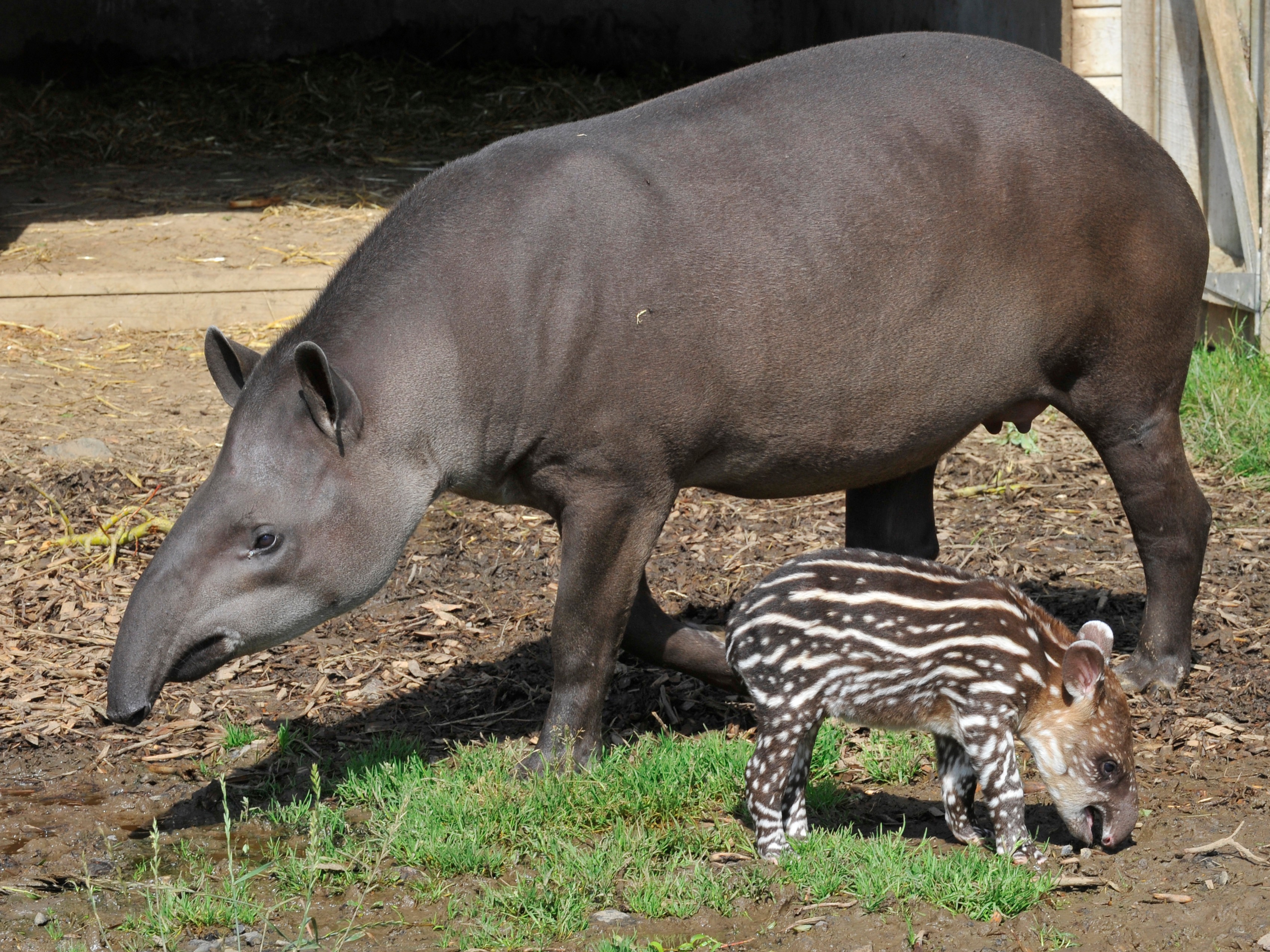- Not all animals resemble their parents when they’re first born.
- Giant pandas are pink, hairless, and incredibly small when they’re born.
- Silvered leaf monkeys have bright orange fur at birth before developing dark, grey fur.
- Visit INSIDER’s home page for more stories.
Baby animals are adorable, but not every cub or chick resembles its parents. In fact, some creatures have a vastly different appearance before they grow up. Whether this means they completely change color or drastically change in size, some newborns just don’t look like they’ll grow up to look like their parents.
From monkeys to amphibians, here are 12 baby animals that look nothing like their adult counterparts.
When giant pandas are born, they’re pink, blind, and hairless.

When giant pandas are born, the cubs are pink, blind, and hairless. They’re also 1/900th the size of their mothers. Considering that adult female pandas can weigh over 200 pounds (91 kilograms), the baby bears are puny. Marsupials, such as kangaroos, are the only other mammals that exhibit such a large difference in size between newborns and mothers.
The reason for the cubs’ diminutive bodies pertains to the species’ bamboo diet. Given that bamboo contains very little nutritional value, grown pandas must eat up to 80 pounds (36 kilograms) of the plant each day so their nutritional needs are met.
"It is easier for the animal to convert bamboo into milk than to convert bamboo into animal tissue," Dajun Wang, a wildlife biologist, told HuffPost.
Tapir calves have camouflage-like markings that disappear when they're older.

Often referred to as "living fossils," tapirs are herbivorous mammals that have been around since the Eocene Epoch, a period that ended 33.9 million years ago.
At birth, these large, pig-like creatures, which are native to Central America, South America, and southeast Asia, have brown and beige bodies offset by white stripes and spots. They lose their camouflaging marks as they grow older.
Young swans have short necks and are covered in a thick coat of down.

Swans don't start out as the graceful, snow-white creatures we picture. Unlike their parents, the young birds, known as cygnets (a Latin word derived from a Greek term meaning "to be white"), have short necks and are covered in a thick coat of down which they wear for over two years.
Emu chicks are characterized by brown- and cream-colored stripes.

Native to Australia, emus are the second-largest living bird on the planet after ostriches. Emu chicks are born with brown- and cream-colored stripes on their feathers that help keep them safe from predators. The stripes disappear as they reach maturity at 2 to 3 years old.
Bald eagles are born with light-grey bodies.

Bald eagles, the national symbol of the United States since 1782, look quite different when they're born. Baby bald eagles' light grey bodies transition to brown throughout the first five years of their life.
Tadpoles have shorter bodies and longer tails than adult amphibians.

Tadpoles look vastly different than adult amphibians. In their larval stage, frogs and toads have short, oval-shaped bodies and long tails. The tadpole stage can last anywhere from two weeks to three years.
California condors don't grow their black plumage until they're older.

North America's largest land bird, the California condor, looks much more menacing in adulthood than in infancy. Condor chicks have yet to grow the striking black plumage or develop the red face that makes their parents a sight to behold. Instead, the young birds are covered with down and a light facial color.
As newborns, silvered leaf monkeys have orange fur.

True to their names, silvered leaf monkeys, an arboreal species found in Malaysia, Brunei, and Indonesia, can be identified by their dark, silvery fur and black skin. But as babies, the monkeys look like they belong to a different species. When they're born, they have orange fur and light-colored skin.
According to the Wildlife Conservation Society, it is believed that their coloring upon birth is a way to gain the attention of other females in the group who might help the mother raise the new baby.
Flamingos aren't pink when they're born.

Flamingos are known for their pink hue, which stems from a diet rich in the pigment carotenoid. Their young, in contrast, are born with downy-white feathers. As they grow older, the birds gradually develop their iconic rosy plumage.
Grey seal pups are born with a coat of white fur.

Despite their name, grey seals can actually vary in color from grey to brown. Even more puzzling is the fact that these marine mammals are born with a coat of white fur that they shed after six weeks. The pups' fur is a trait left over from the ice age when their mothers would have given birth on snow.
Echidnas don't grow spikes until they're 50 days old.

The echidna is an egg-laying mammal, or monotreme, native to Australia, Tasmania, and New Guinea. Adults echidnas are coated in spikes but their young, called puggles, don't grow quills until they're 50 days old. In fact, the babies bear a striking resemblance to nifflers, the pocket-picking creatures from "Fantastic Beasts and Where to Find Them."
Kangaroos are only one-inch long (2.5 centimeters) when they're born.

Baby kangaroos, aka joeys, are born blind and hairless. At only 1-inch long, a newborn joey will immediately climb up its mother's body and into her pouch so that she can feed it. The tiny marsupial will then attach itself to a teat for several weeks before spending time outside the pouch, which it won't leave completely for seven to 10 months.
